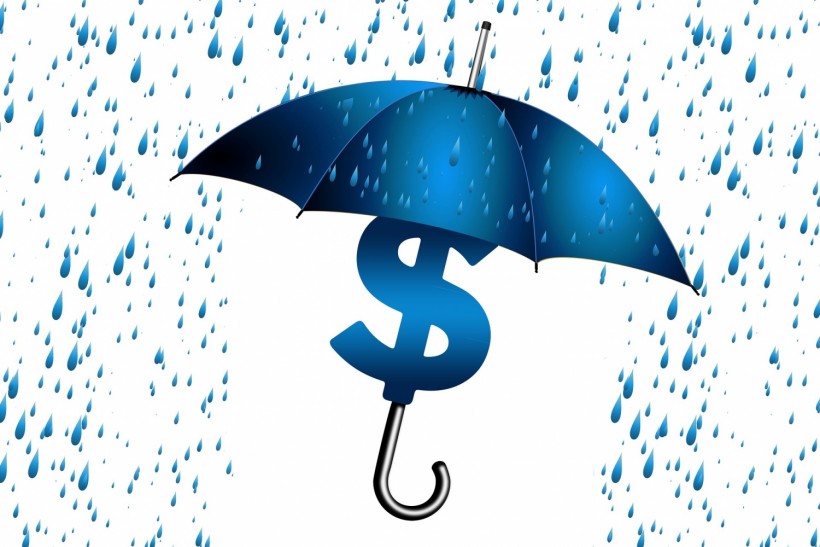
(Photo : Gerd Altmann from Pixabay)
Managing your finances is a critical part of achieving financial success. With rising costs of living, creating a strategy to maximize your savings can be key to achieving your financial goals. One way to do this is to use a high-yield savings account to make the most of your money. High-yield savings accounts offer higher interest rates than regular savings accounts and are a great way to build your savings over time.
In this blog post, we'll discuss how to use a high-yield savings account strategically to meet both your short-term and long-term financial goals. We'll cover how to set up an emergency fund, save for larger purchases, and use a high-yield savings account to build a sustainable retirement fund. By the end of this post, you'll have the tools and strategies you need to make the most of your money by using a high-yield savings account.
Click here to get started on your high-yield savings account.
1. Understand how high-yield savings accounts work
High-yield savings accounts are interest-bearing accounts that typically offer a higher rate of return than regular savings accounts. These accounts are usually FDIC-insured and are offered by a variety of financial institutions. When you deposit money into a high-yield savings account, it will start to earn interest at the rate specified by the bank or credit union. The interest is compounded daily, meaning you can earn even more money over time.
2. Determine an appropriate amount to store in your high-yield savings account
When appropriating amounts to store in a high-yield savings account, it is important to consider both short-term and long-term goals. It is advised to keep enough funds in the account to cover any emergency expenses, as well as money set aside for larger future purchases. Generally, experts recommend setting aside an amount equal to three to six months of living expenses in an emergency fund.
3. Develop an emergency fund
An emergency fund is essentially a cushion of money that is accessible in case of an unanticipated financial emergency, such as a job loss, medical bill, or home repair. It's important to have an emergency fund of at least three to six months of your salary set aside so that you can weather any disruptions without having to rely on credit or depleting your long-term savings. High-yield savings accounts are a great option for emergency funds because they offer higher interest rates than traditional savings accounts.
4. Utilize the high-yield savings account for short-term goals
These types of accounts are designed to provide a higher rate of return than traditional savings accounts, enabling you to earn more money over time. It is important to note that these accounts are best used for short-term goals that have a definite timeline, such as saving for a vacation or a down payment on a home. With this approach, you can quickly acquire the necessary funds for your goal and enjoy the benefits of a high-yield savings account.
5. Consider using CDs for long-term goals
If you're planning to save for a future purchase or expense, consider using certificates of deposit (CDs). A CD is a type of account that pays a fixed interest rate, and the funds can't be accessed until the term of the CD is up. CDs offer higher interest rates than traditional savings accounts, but the funds are locked away for the duration of the CD's term. The potential returns on CDs can be worth the wait if you're saving for a long-term goal.
6. Consider the pros and cons of transferring funds from one account to another
When it comes to planning a strategy for your high-yield savings account, it is important to consider the pros and cons of transferring funds from one account to another. Transferring funds from an existing account to a high-yield account can help you earn more interest on your money. On the other hand, transferring funds from one account to another can incur fees, and there might be a delay in the transfer. Additionally, transferring funds from an existing account to a high-yield account can be difficult if the account has been inactive for some time. Before transferring funds, be sure to understand any fees or delays associated with the transfer in order to help you make an informed decision.
7. Know the potential tax implications of withdrawing funds
Before withdrawing money from your high-yield savings account for any purpose, make sure you are aware of the potential tax implications. Depending on your individual tax situation, withdrawals from a high-yield savings account may be subject to federal tax, state income tax, and even local taxes. It's important to consult a qualified tax professional or financial advisor to understand how withdrawals from a high-yield savings account may impact your overall financial strategy.
8. Understand how your high-yield savings account can help you save for retirement
A high-yield savings account is an excellent way to save for retirement. It offers a secure, low-risk option with the potential of higher returns than a traditional savings account. In addition, it's a great way to diversify your retirement portfolio and add another level of protection for your future. With a high-yield savings account, you can stash away money for retirement and earn interest on your deposits. You can also set up automated transfers from your checking account to your high-yield savings account, making saving for the long term easier. With careful planning and management, you can leverage the power of compound interest to help you reach your retirement goals.
9. Utilize online banking access to track your account
It is important to keep track of your high-yield savings account and monitor how much money is going in and out. Utilizing online banking access to track your account allows you to view your balance, transactions, and other deposits. This will assist you in budgeting and help you to stay informed of any potential fraudulent activity. Additionally, signing up for account notifications can alert you when your balance is running low and when transactions have been made. This will help you stay on top of your account and ensure your funds are utilized most efficiently.
10. Stay up-to-date on the latest account regulations and policies
As with any financial product, it is important to stay up-to-date on the rules and policies that govern high-yield savings accounts. Many of the regulations and policies are designed to protect consumers, but they can also be confusing. Make sure you understand the terms and conditions of your account, as they may change over time. Additionally, it's a good idea to be aware of the latest trends in the banking industry, as they could impact your account and your financial goals. Keeping abreast of changes in the banking industry can help ensure you make the best decisions with your money.
In conclusion, a high-yield savings account serves many different purposes. It is a great tool for both short-term and long-term goals as it provides a safe place to save for an emergency fund and also offers higher rates of return for long-term goals. Although it may take some initial research to find the right account, the benefits of a high-yield savings account can be worth the effort to help reach financial goals.
* This is a contributed article and this content does not necessarily represent the views of hngn.com








